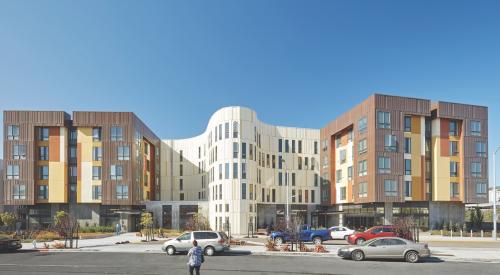 |
Housing drivers will change with immigration, says USC's Gary Painter. |
Researchers at the University of Southern California's Lusk Center for Real Estate find different housing patterns — and lower home ownership rates — among immigrants in 14 cities are emerging as "gateway" centers — attracting migrant populations directly from outside this country.
The leader of the study warns builders in these markets to be ready for an inevitable spike in ownership housing demand, and that this new demand may be for very different products than those that currently dominate those markets. Since 9.1 million immigrants entered this country legally during the 1990s, and that pace continues, immigration impacts may soon turn these markets in different directions.
While previously most immigrants came to this country through six established gateway cities—New York, Chicago, Miami, San Francisco, Los Angeles and San Diego—the last decade has seen new centers of immigration come to the fore: Atlanta, Boston, Dallas, Denver, Houston, Las Vegas, Orlando, Fla., Philadelphia, Phoenix, Sacramento, Calif., Seattle, Tampa, Fla., Washington, D.C./Baltimore and West Palm Beach, Fla.
"Our study focused for the first time on these emerging gateway metro areas," says Gary Painter, Ph.D., an associate professor in USC's School of Policy, Planning and Development. "These cities have large-scale population increases from immigrants moving directly from overseas. While we assumed that lower housing costs would improve home ownership rates, that's not what we found. Migrants still need time to establish themselves in the labor market, achieve an income level that makes home ownership possible and find a home that is affordable. And these new centers have a much higher percentage of new immigrants. Almost 50 percent of the immigrant populations of these cities has been in this country for less than ten years."
Painter and graduate student Zhou Yu found, as in past studies, that recent immigrants have worse housing outcomes than existing residents when they first arrive. — the deficit persists for ten to 15 years. But over time, that negative impact of immigrant status fades away. "Because 47 percent of immigrants in the past ten years have entered through these 14 new gateways, immigration has a much greater impact on home ownership in these cities," Painter says.
One phenomenon is especially interesting: "Comparing the 2000 census to that of 1990," Painter says, "shows that by 2000, multiple residents in a household, producing multiple incomes, became a positive predictor of home ownership. Immigrants pool incomes to finance home purchases.
"We also found that while it remains true that home ownership rises with age, younger immigrants are more likely to own a home than U.S.-born households of the same age," he says. "Immigrants have strong upward mobility and make home ownership a priority to attain status in this country."
Immigration is an engine that will increasingly drive housing production in these emerging gateway cities, Painter says.
"In the next few years, the biggest impact will still be on multifamily production, but sometime between 2005 and 2010, you'll probably see what happened in California's Inland Empire begin to happen in these cities. Multi-generational immigrant families and multi-ownership buyers will demand large, single-family homes with very high bedroom counts. The Inland Empire is a good model for builders in these cities to study."












